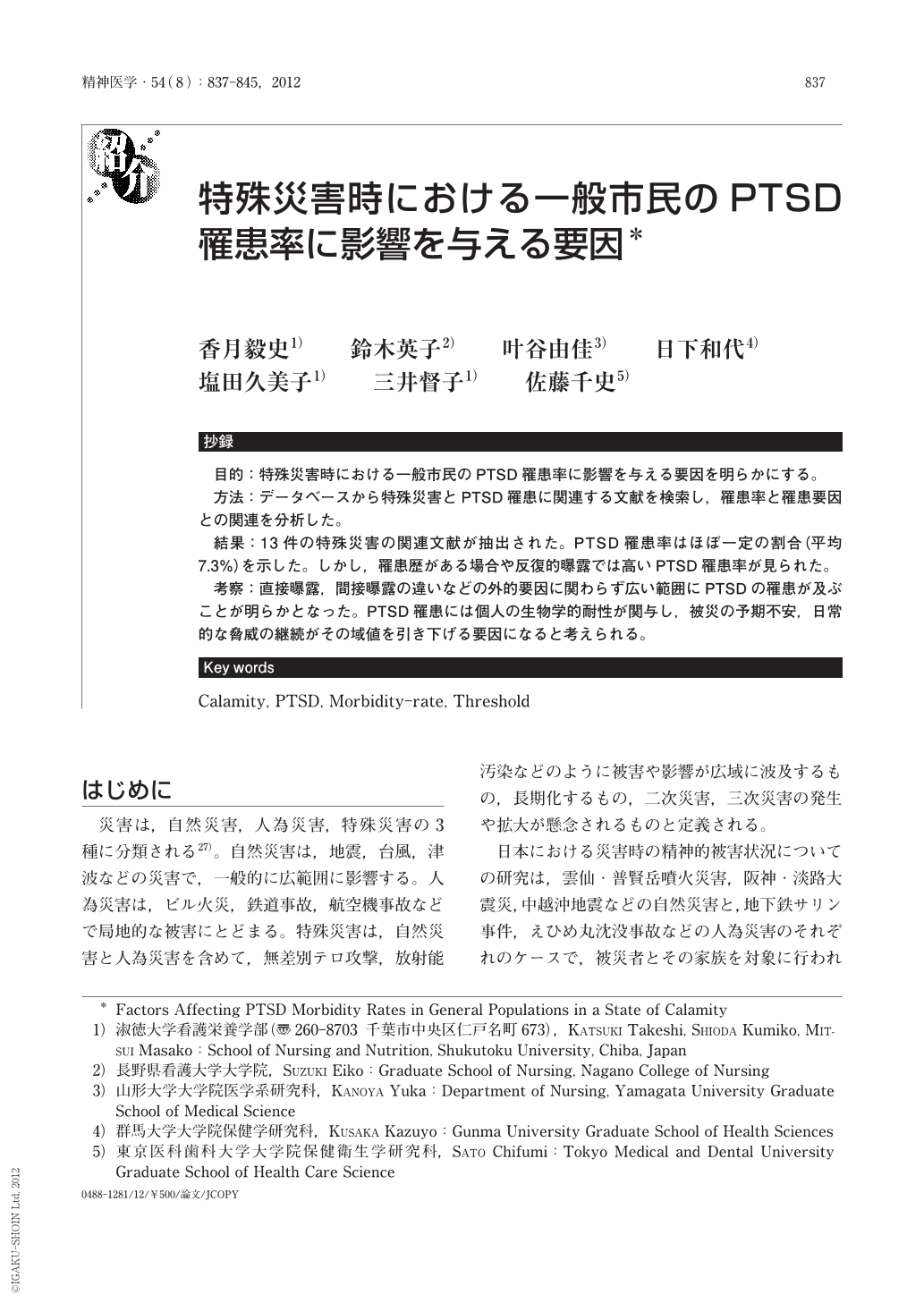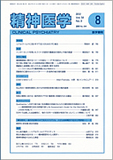Japanese
English
- 有料閲覧
- Abstract 文献概要
- 1ページ目 Look Inside
- 参考文献 Reference
- サイト内被引用 Cited by
抄録
目的:特殊災害時における一般市民のPTSD罹患率に影響を与える要因を明らかにする。
方法:データベースから特殊災害とPTSD罹患に関連する文献を検索し,罹患率と罹患要因との関連を分析した。
結果:13件の特殊災害の関連文献が抽出された。PTSD罹患率はほぼ一定の割合(平均7.3%)を示した。しかし,罹患歴がある場合や反復的曝露では高いPTSD罹患率が見られた。
考察:直接曝露,間接曝露の違いなどの外的要因に関わらず広い範囲にPTSDの罹患が及ぶことが明らかとなった。PTSD罹患には個人の生物学的耐性が関与し,被災の予期不安,日常的な脅威の継続がその域値を引き下げる要因になると考えられる。
OBJECTIVES:To clarify the factors affecting the morbidity rate of postraumatic stress disorder (PTSD) in a general population experiencing a long-term, broad-based calamity.
METHODS:Articles relevant to disasters and PTSD were extracted from a database, and the relations between morbidity rate and factors were analyzed.
RESULTS:Thirteen articles related to long-term, broad-based disasters were extracted. The values of PTSD morbidity rates were almost fixed(mean value 7.3%). Higher rates were reported in the case of patients in hospitals or in those with repetitive exposures to disasters.
CONSIDERATION:It was clarified that a wide range of population groups would develop PTSD regardless of external factors, such as type of exposure (direct or indirect).
It was considered that individual biological tolerances affect PTSD morbidity, and worrying about experiencing a calamity and continuous daily threats could be factors that reduce the threshold of PTSD.

Copyright © 2012, Igaku-Shoin Ltd. All rights reserved.


